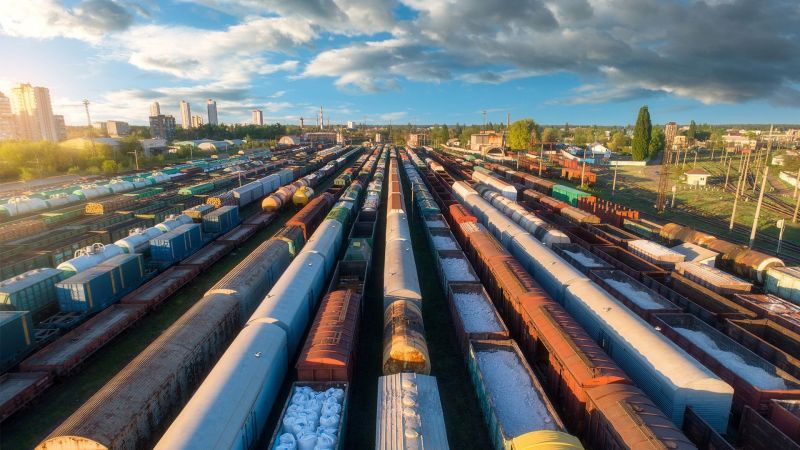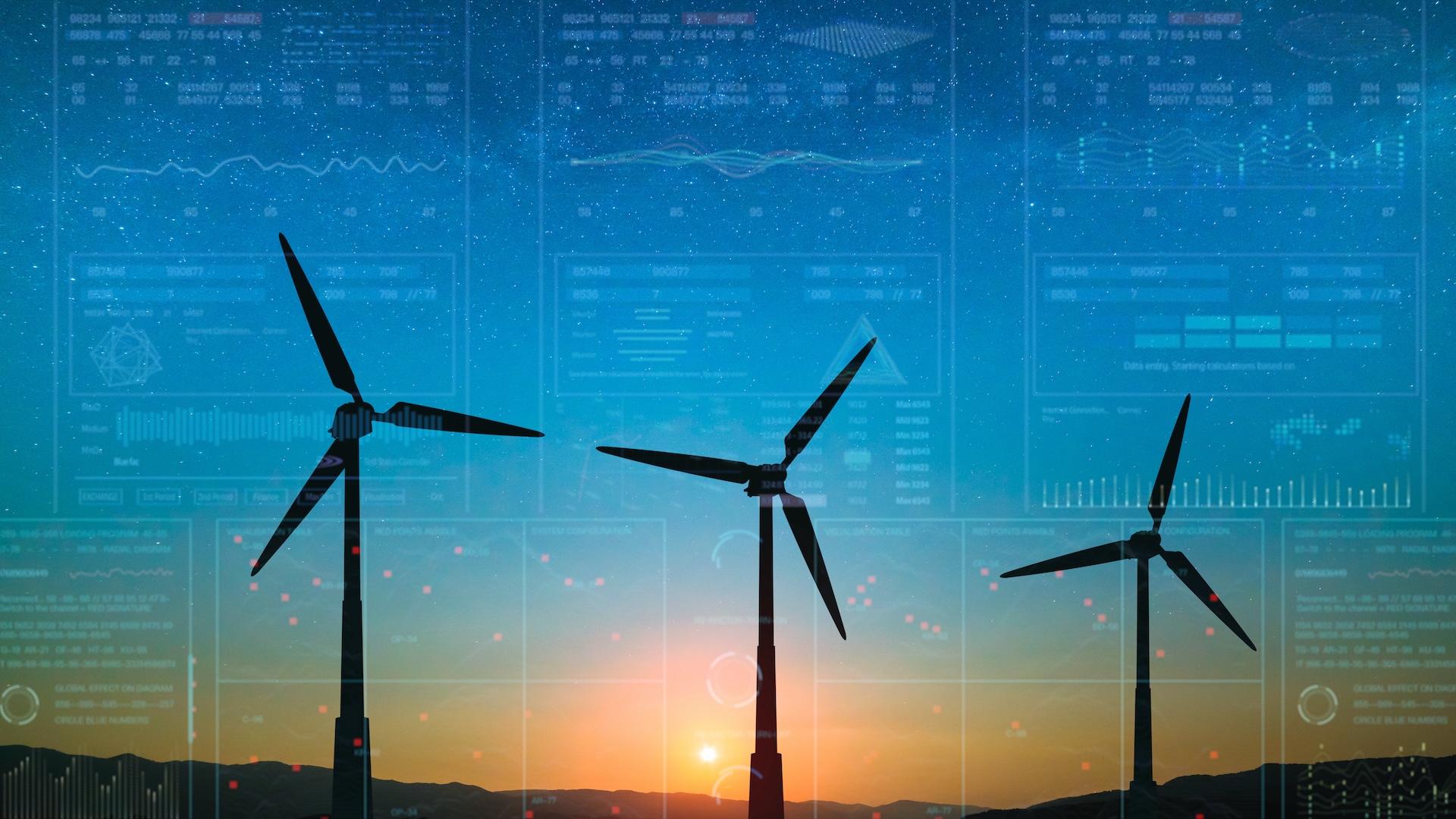Is Data The Answer To Rail’s Big Fail?
How small sensors can transform a legacy industry into a modern heavyweight

In 2014, the commercial railway industry made up about half of all freight handled within North America. By 2020, it had dropped to 37 per cent of the market and is expected to decline further in the coming years. Despite the growth of the North American market fuelled by globalization and e-commerce, a larger share of goods is now being transported by trucks than railways. While part of the trend can be explained by the rise of last-mile shipments for online orders, larger-sized trucks such as 18-wheelers, reefers and tankers have come to dominate cross-country deliveries.
How did this time-tested mode of transportation lose its competitive edge? The answer can be found in the industry’s poor record in data collection and tracking—something that could be addressed by sensors no larger than a lunchbox.
Where railways struggle
Today, both privately-owned transporters and third-party contractors face the same issues that prevent the rail industry from staying competitive. They all relate to the need for timely information to address shortcomings in real-time tracking of rail car location, monitoring the condition of the different components of the railway car and ensuring safe operations.
Lack of visibility. In an age when consumers can easily track real-time location and estimated time of arrival of their online orders, the railways’ supply chain managers must deduce the location of rail cars using infrequent and often out-of-date information. At present, most tracking is based on low-powered transponders usually situated near key network nodes such as switchyards, major stations and loading docks. The small quantity of transponders is not enough to manage the large volume of trains on the move. Such reduced visibility in the network leads to operational inefficiency as managers are unable to provide status updates to customers or accurately coordinate future shipments.
Lack of information on the condition of rail cars. Each rail car must undergo a detailed maintenance routine to comply with safety regulations and prevent critical failures. Condition monitoring is also important to ensure cargo has not been damaged as a result of collisions, derailments, infestation of perishable goods or leakages of liquids or gases. Yet supply chain managers often have little insight on the physical condition of their cars and the cargo they hold. Given that cars are sealed from the start of the journey until they reach the destination, railway operators cannot perform regular physical check-ins on the status of the cargo. Lack of visibility also prevents supply chain managers from predicting which regions have higher damage rates.
Health and safety concerns. The reduced visibility of rail cars throughout the network makes transporting goods by rail a riskier endeavour for operators and the towns through which the trains travel. In 2022, freight trains accounted for 32 per cent of all rail accidents in Canada. In 2023, 87 out of the 913 rail accidents involved dangerous goods.
How can sensors help?
In recent years, companies such as RailPulse, MERMEC Group and Rail Vision have been addressing these challenges using digital technology such as smart sensors. These sensors work atop existing smart components such as automated brakes and temperature control units to create a mini network of devices that’s often referred to as the “smart train”. Smart sensor manufacturers and other third-party vendors aggregate all the data generated by sensors and produce reports in real-time through specialized data visualization and monitoring software. Some larger firms also offer predictive analysis based on Big Data and machine learning.

Consider the impact that smart sensors would have on real-time tracking of rail cars. When consumer-based global positioning technology became available, the trucking industry eagerly adopted low-cost and familiar technologies such as Garmin and Google Maps. Despite having to contend with the larger and more complex network of highways and inner-city roads, logistic coordinators found it easier to keep track of all their dispatched trucks and plan their fleet with higher precision. As a result, they optimized routes and became more profitable.
Similar benefits could be leveraged by railways using smart sensors based on geographic information system (GIS) data. Supply chain managers could identify the location of individual rail cars within the network at any moment and update customers with schedule changes. Using specialized data analysis and visualization software, they could identify bottlenecks in the network and prevent cars from going missing or stuck at border checking stations and switchyards. That means less time spent on tracking and quicker detection and resolution of common issues such as misrouting.
A smart ounce of prevention
Another benefit of smart sensors is condition monitoring, an umbrella term covering an assortment of tools offering up-to-date status of key components of rolling stock—from brake health to humidity and temperature control. Condition monitoring is a holistic system that benefits supply chain coordinators in two main areas: preventive maintenance and cargo safety.
Without condition monitoring and component tracking systems, routine checks require technicians to inspect each part of the rail car rather than addressing only the components that require attention. Increased collection of data from smart sensors allows preventive maintenance to be a proactive process; with the right data, technicians can forecast when additional inspections and repairs need to be scheduled and can detect wear and tear of components earlier.
Similarly, sensors provide information on collision detection, derailments, temperature changes, leaks or any other issue that could compromise the safety of the cargo. These insights can help managers better plan their routes to avoid damage-prone areas and schedule shipments during periods with reduced risk of damage to the car and cargo.
Smart sensors can also be equipped with emergency systems that signal potential risks to operators and local authorities. Such systems mitigate the damage caused by hazardous spills and extreme weather conditions and ensure swift action takes place. According to one estimate, automated systems such as smart sensors could reduce the causes of incidents by human error from 68 per cent to 40 per cent.
What is delaying the data revolution in rail?
Despite the overwhelming benefits of a more data-driven approach to railway management, there has been a significantly low adoption rate for smart sensors. A big reason is the cost of implementation and upkeep for installing devices across a fleet of cars, as well as the necessary enterprise-wide IT implementation for software to work with the sensors.
Large capital commitments may also be risky at this time since technology is still improving, and the field of vendors is fragmented. Currently, there are at least 100 companies that offer different sets of systems and software to improve railway operations as well as smaller specialized vendors with niche solutions. The absence of an out-of-box system that can integrate different devices made by multiple vendors is a barrier for those railways that want a seamless, end-to-end solution.
It is also true that railway car operators that own rail tracks have a conflict of interest in adopting smart sensors. Accurate location history, for example, could force an operator to explain why they are behind on their timeline (which is an issue in cross-border shipping when a rail car is handed off to a different operator). When condition monitoring is combined with location tracking, it is possible to determine when and where rail car components were damaged due to mishandling or accidents, which can expose the railway car operator to a claim for damages.
All this adds up to continued uncertainty for an industry that is ripe for transformation. Digitization is one of the few ways railway companies can save themselves from their current predicament. The lesson can be learned from trucking: the relationship between trucking companies and their customers has been transformed using electronic logging devices that offer real-time delivery status. But, unless additional steps are taken, railway companies will continue to cede ground to the trucking industry and end up running on fumes.
This article was researched and written by a team of Master of Management Analytics students at Smith School of Business.